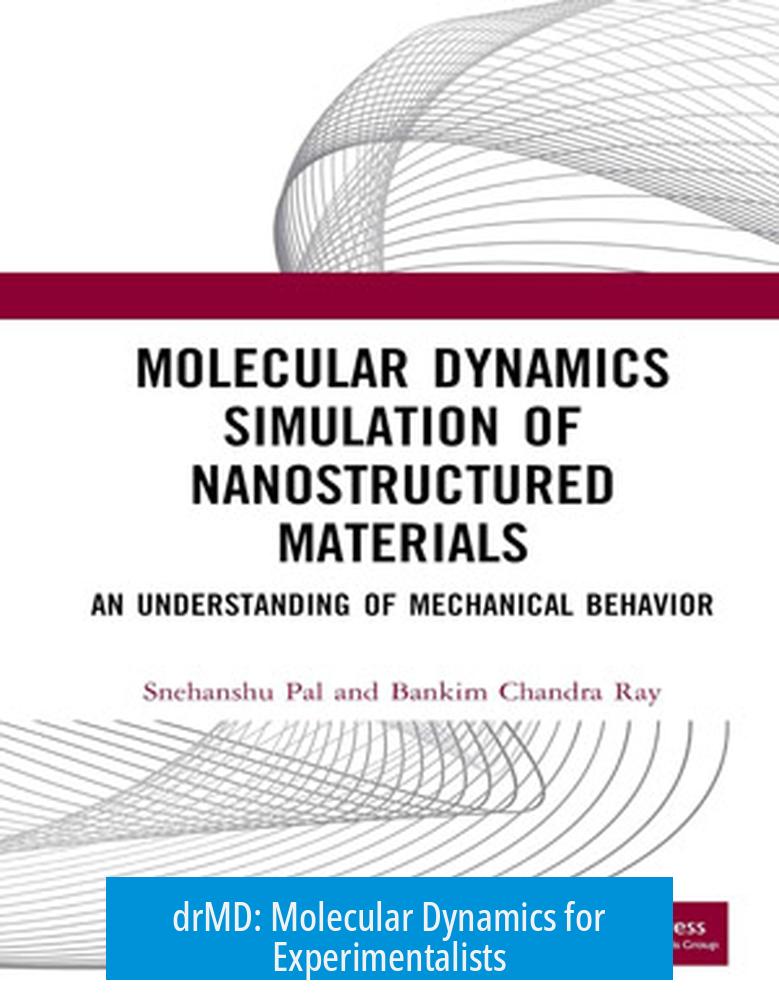drMD: Molecular Dynamics for Experimentalists
 drMD bridges experimental data and molecular dynamics simulations to enhance understanding of molecular processes for experimentalists. It translates experimental observations into computational models, enabling detailed analysis of molecular behavior often hidden from direct experimental view.
drMD bridges experimental data and molecular dynamics simulations to enhance understanding of molecular processes for experimentalists. It translates experimental observations into computational models, enabling detailed analysis of molecular behavior often hidden from direct experimental view.
Introduction to drMD
drMD stands for Molecular Dynamics tailored for experimentalists. It serves as a tool connecting experimental data with computational simulations. This connection allows experimentalists to explore molecular mechanisms with atom-level detail beyond static experimental snapshots.
Application of Molecular Dynamics in drMD
One key use of drMD lies in studying protein-ligand interactions. Given experimental data on protein binding, drMD simulates movements and interactions of involved molecules. It identifies binding sites, tracks conformational changes, and predicts interaction strength and characteristics. This functionality enables detailed interpretation of binding events crucial for drug discovery and protein engineering.
Functional Capabilities of drMD
- Realistic Simulations: drMD conducts atomistic simulations reflecting conditions from experimental setups.
- Data Integration: It incorporates experimental constraints such as NMR distances or cryo-EM structures into molecular trajectories.
- Dynamic Visualization: drMD provides animated molecular views, revealing processes inaccessible via static experiments.
- Hypothesis Testing: Users can test computational hypotheses derived from lab observations, validating or refining experimental theories.
Benefits for Experimentalists
drMD offers molecular-level insights that experimental methods alone cannot provide. It helps predict experimental outcomes, suggest site-directed mutations, and guide further laboratory work. Experimentalists also gain theoretical understanding of molecular dynamics, aiding interpretation and experimental design.
Summary of drMD Advantages
- Transforms experimental data into dynamic molecular simulations.
- Identifies molecular interactions and conformational changes.
- Integrates experimental restraints to improve simulation accuracy.
- Enhances hypothesis generation and testing in silico.
- Bridges theory and experiment, advancing molecular research.
What makes drMD unique for experimentalists?
drMD links experimental data with molecular dynamics simulations. It helps experimentalists see molecular motions not visible in static experiments.
How does drMD help in studying protein-ligand interactions?
drMD simulates how proteins and ligands move and bind. It can pinpoint binding sites, show shape changes, and estimate interaction strength.
Can experimental data be used directly in drMD simulations?
Yes. drMD integrates data like NMR distances or cryo-EM structures into its simulations, ensuring results align with experimental findings.
How does drMD support hypothesis testing?
It allows users to test ideas generated from experiments by running simulations that predict molecular behavior before further lab work.
What benefits does drMD offer beyond traditional experiments?
drMD reveals detailed molecular dynamics that experiments alone may miss. It can also guide experiments by suggesting mutations or predicting effects.





Leave a Comment